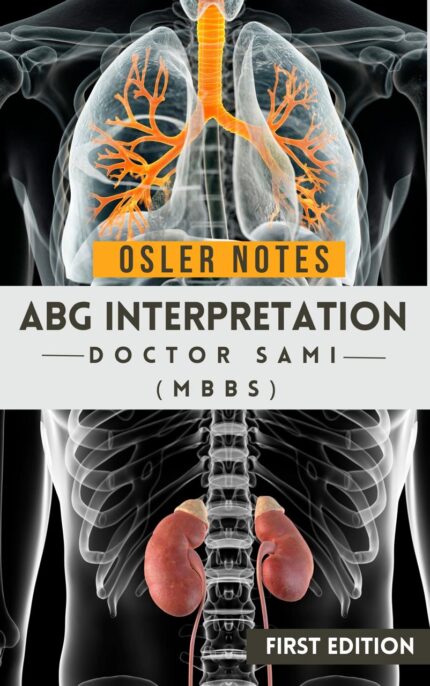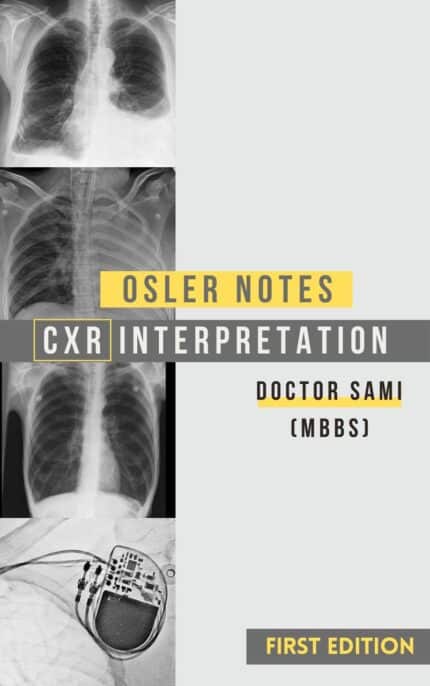

EKG Interpretation
$70.00 Original price was: $70.00.$45.00Current price is: $45.00.
🎧 If ABG is the VFX… then EKG is the Sound Design 🎛️—
If ABG is the 🎬 VFX—revealing the invisible states 🫁⚖️ of acid-base and oxygenation…
Then EKG is the 🎼 the Sound Design 🎛️ of clinical medicine—
It captures the rhythm 🫀, tension ⚡, and urgency 🚨 of the heart, beat by beat.
But this isn’t just poetic.
This book is crafted to bridge the gap between textbooks and real clinical life — giving medical students and fresh graduates the tools to:
🔬 Understand how each EKG wave is generated — from ions ⚛️ to impulses ⚡ to waveform
🩺 Decode arrhythmias, ischemia, and blocks with clarity and confidence
⏱️ Make fast, accurate decisions at the bedside — with confidence
📈 Connect every waveform to real patient physiology and clinical context
🧩 Learn through structured chapters and visual design that make complex ideas easy to grasp
Because reading an EKG isn’t just about lines on a screen — it’s about hearing the heart’s call for help, & knowing how to answer.
What You’ll Learn in This Book
1. EKG Fundamentals
📖 Build a strong foundation by learning how EKG waveforms originate, what each interval and segment represents, and how to recognize a normal EKG—your essential starting point for accurate interpretation.
2. Chamber Enlargement
🏋️ Decode how atrial and ventricular enlargement present on the EKG and why it matters in clinical assessment.
3. Understanding Arrhythmias
⏱️ Learn the core mechanisms behind arrhythmias and apply a 6-question framework to interpret rhythm strips with clarity and confidence.
4. QRST Abnormalities
⚡ Dive into the causes behind abnormal QRS, ST, and T wave findings—organized by focused differentials for real-world utility.
5. Myocardial Infarction Patterns
❤️ Recognize the evolving EKG features of STEMI and NSTEMI, localize infarcts, and understand the significance of Q waves, reciprocal changes, and dynamic patterns.
6. A Systematic Approach to Reading EKGs
🧭 Master a reliable, step-by-step method to evaluate rate, rhythm, axis, intervals, wave morphology, and pathologic findings—combining visual cues with clinical reasoning.
7. The 5 Cardinal Rules of EKG Interpretation
📌 Use five high-yield, easy-to-remember rules to simplify complex EKGs and avoid common diagnostic pitfalls.
8. EKG & Murmur Correlation
🎧 Link EKG findings with heart murmurs—integrating rhythm disturbances, hypertrophy, and conduction abnormalities with valvular diseases at the bedside.
9. Sinus Node Dysfunction
🚦 Identify patterns like sinus arrest and SA exit block—vital for evaluating unexplained syncope, dizziness, and fatigue.
10. QT Interval & Long QT Syndrome
📏 Learn to measure the QT interval correctly, recognize prolonged QT, and understand the genetic and acquired causes—along with their link to torsades de pointes.
11. PACs and PVCs
🔁 Understand premature atrial and ventricular complexes—when they’re harmless, when they’re not, and how to approach them clinically.
12. Ventricular Tachycardia (VT)
🚨 Explore the types of VT, key diagnostic clues, and life-saving criteria for distinguishing sustained VT from other rhythms.
13. VT vs. SVT with Aberrancy
🧠 Apply structured tools like the Brugada and Vereckei criteria to safely differentiate wide-complex tachycardias—because the wrong diagnosis can cost lives.
14. Wolff-Parkinson-White (WPW) Syndrome
⚡ Spot pre-excitation patterns, understand associated arrhythmias, and learn why WPW isn’t just about the delta wave.
15. Subtypes of Atrial Flutter
🌀 Differentiate typical and atypical atrial flutter based on morphology and axis—crucial knowledge for guiding ablation and long-term treatment.
16. EKG Clues to Sudden Cardiac Death
💔 Recognize high-risk patterns linked to sudden cardiac death—Brugada, long QT, hypertrophic cardiomyopathy (HCM), and arrhythmogenic right ventricular cardiomyopathy (ARVC).
17. Ten Commonly Missed Diagnoses
🧩 Review a list of ten high-yield but often-overlooked EKG diagnoses—such as pericarditis, hyperkalemia, hypothermia, and pulmonary embolism.
18. Pacemakers & ICDs
🔧 Learn how to interpret EKGs in patients with pacemakers and ICDs—recognize pacing modes, capture issues, and device malfunctions with ease.






Reviews
There are no reviews yet.